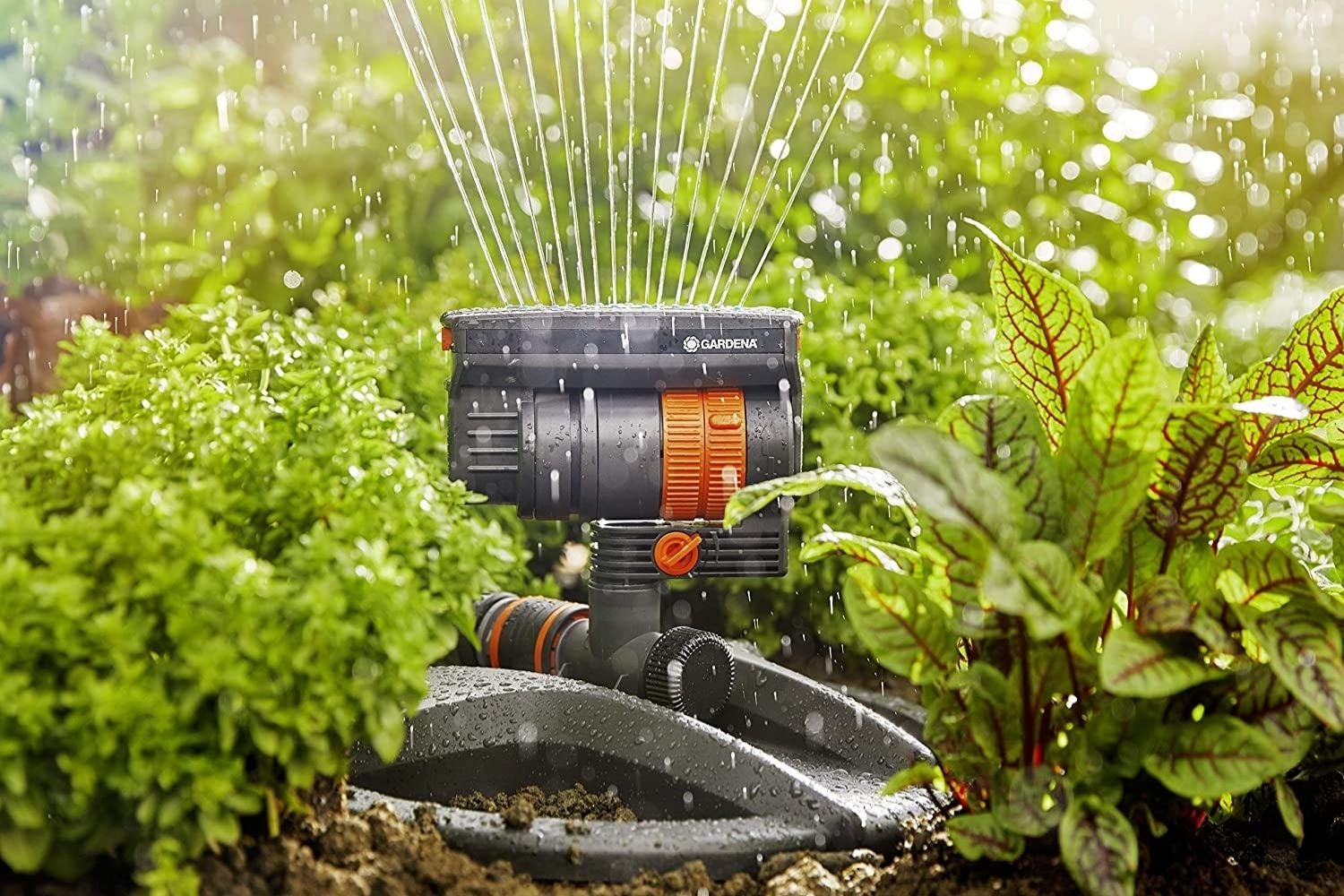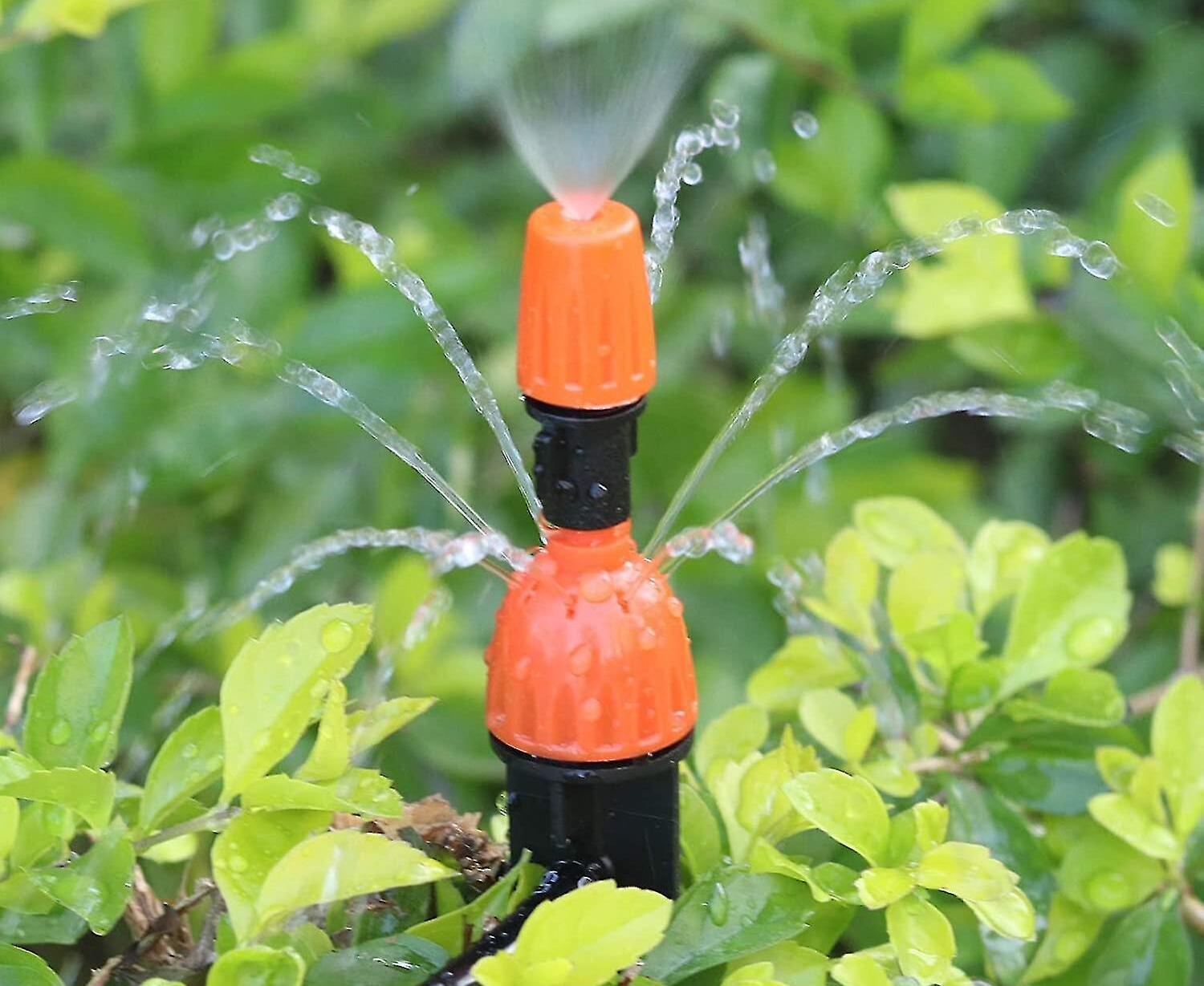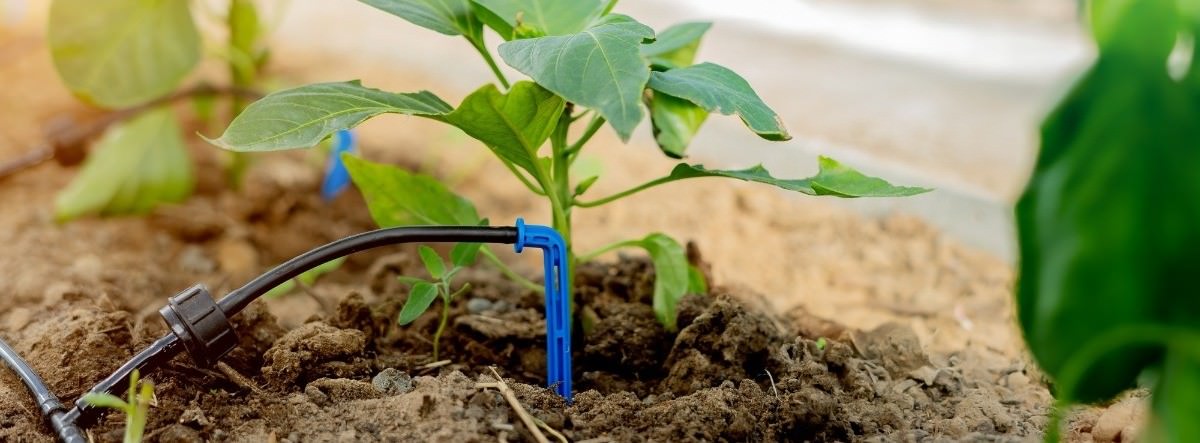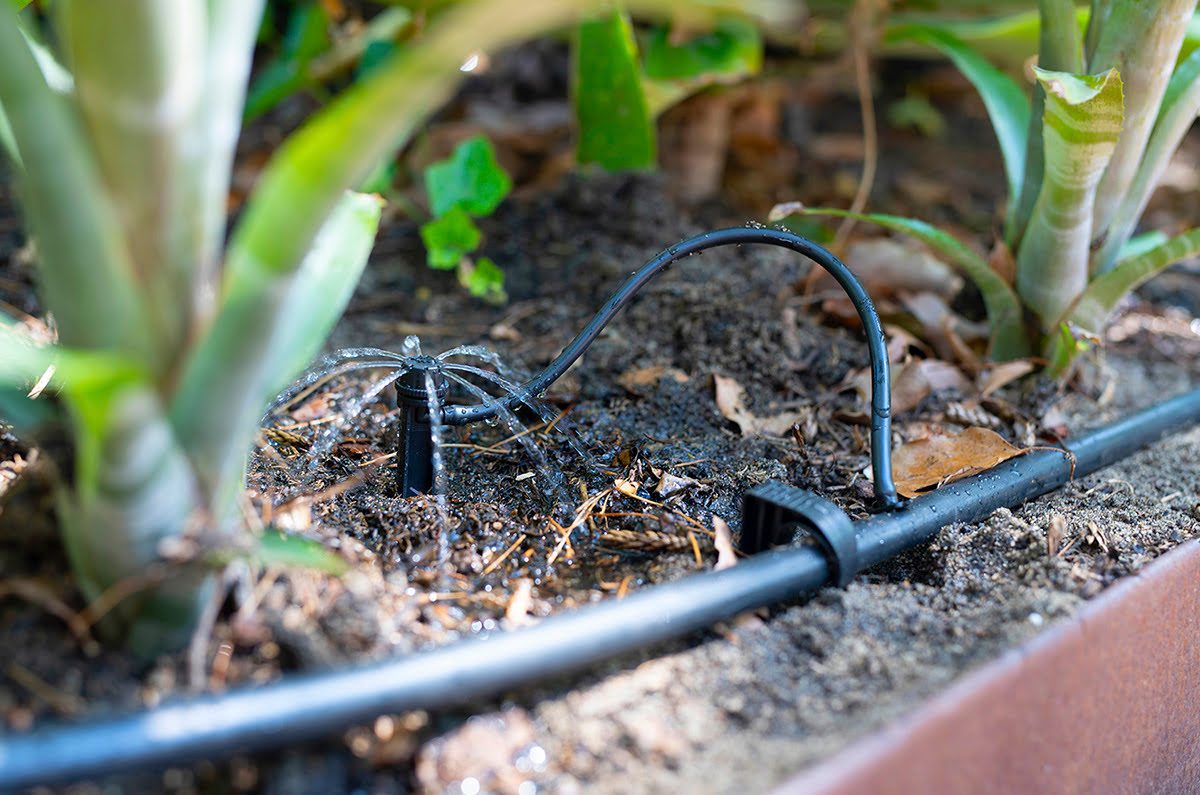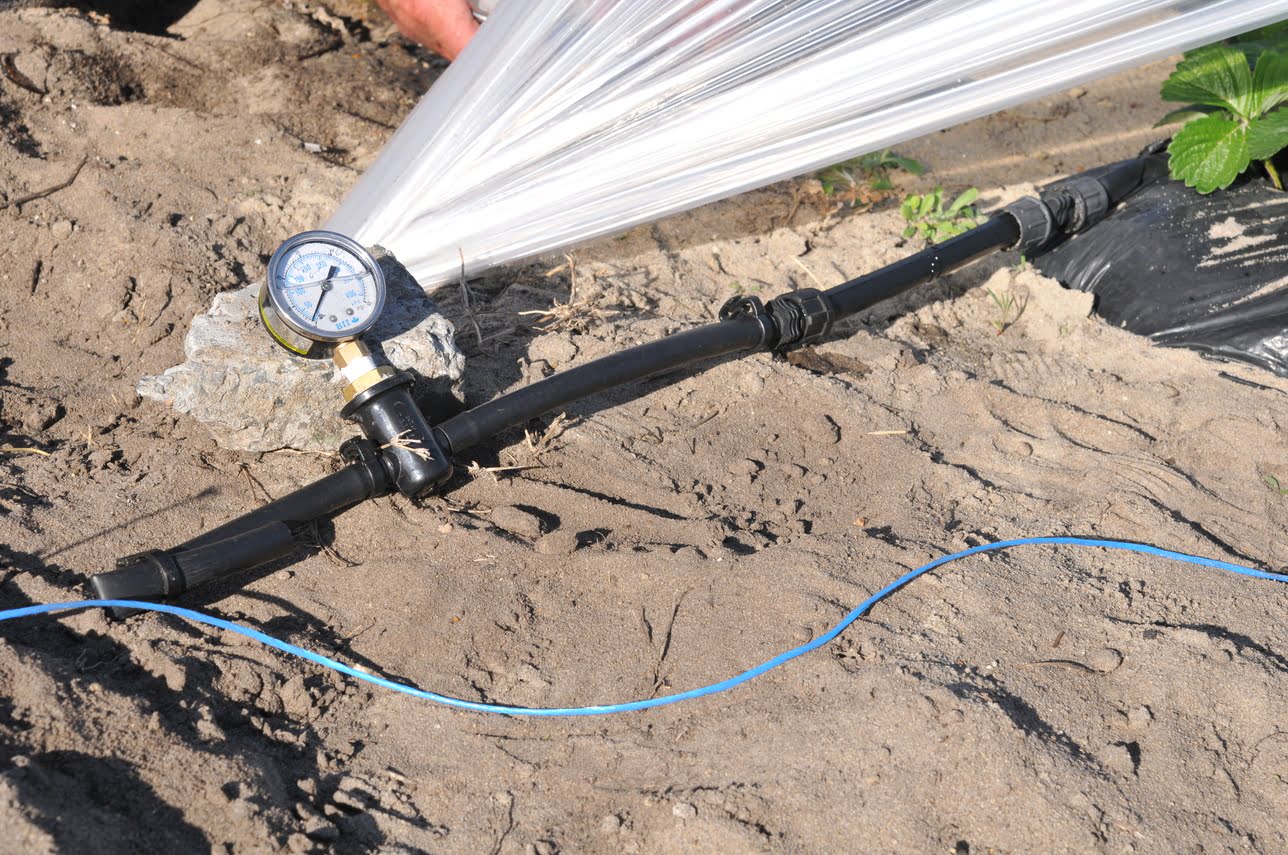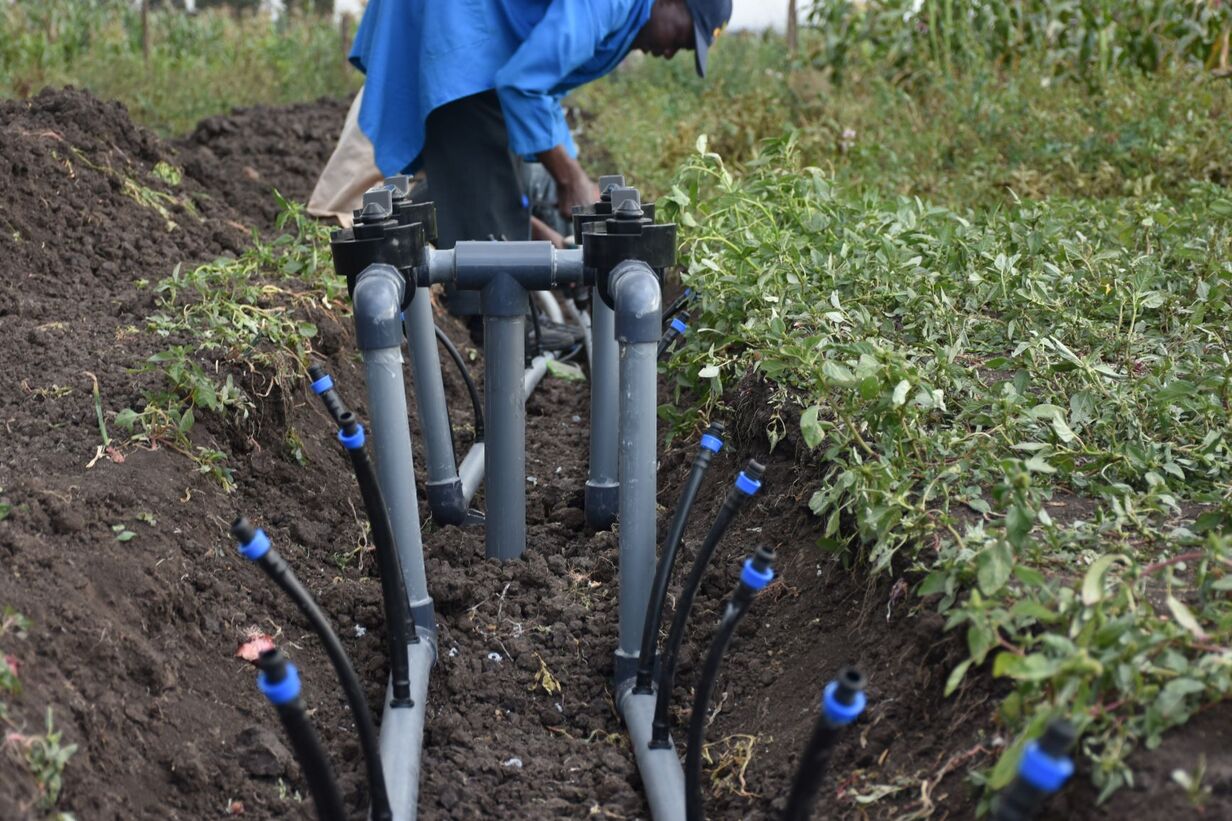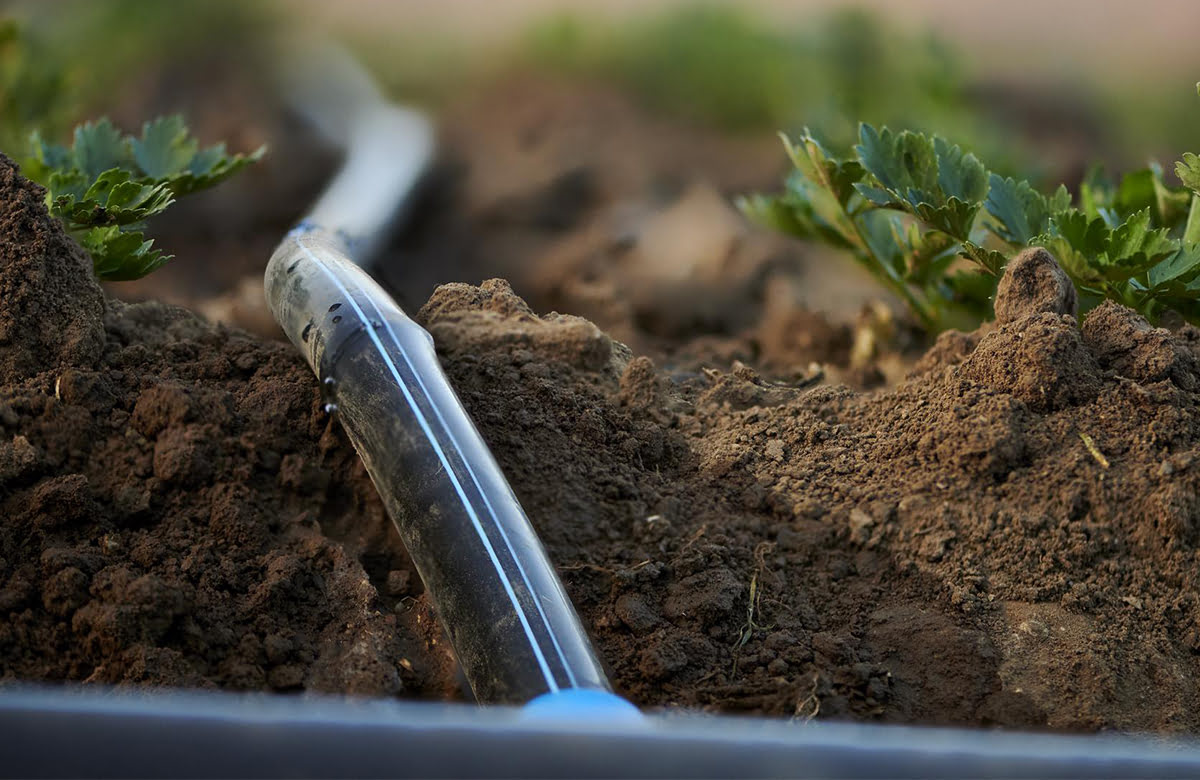Home>Gardening News and Trends>Latest News>Which Is Better Drip Or Spray Irrigation
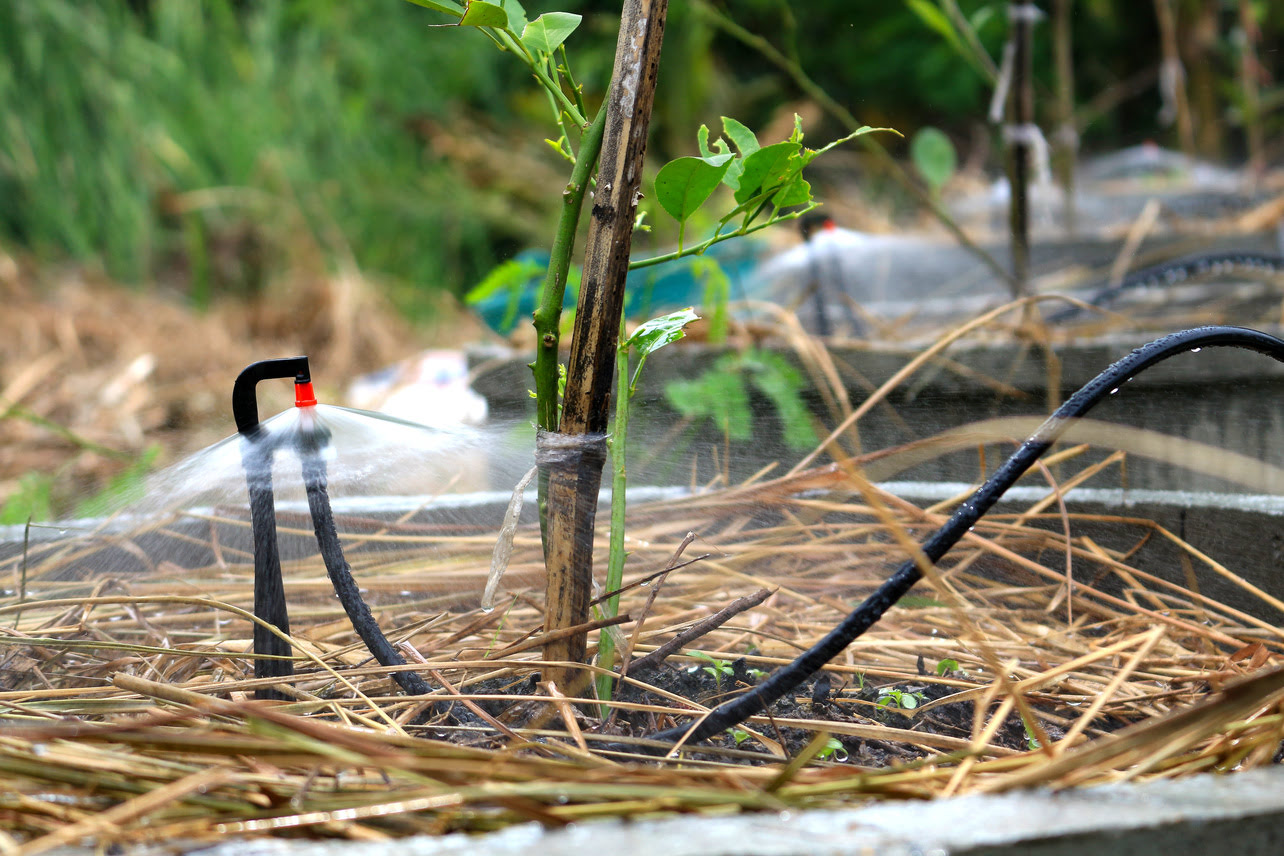

Latest News
Which Is Better Drip Or Spray Irrigation
Modified: January 22, 2024
Discover the latest news on drip and spray irrigation techniques to determine which one is better for your garden.
(Many of the links in this article redirect to a specific reviewed product. Your purchase of these products through affiliate links helps to generate commission for Chicagolandgardening.com, at no extra cost. Learn more)
Table of Contents
- Introduction
- Overview of Drip Irrigation
- Advantages of Drip Irrigation
- Disadvantages of Drip Irrigation
- Overview of Spray Irrigation
- Advantages of Spray Irrigation
- Disadvantages of Spray Irrigation
- Comparison between Drip and Spray Irrigation
- Factors to Consider in Choosing Drip or Spray Irrigation
- Conclusion
Introduction
When it comes to irrigating crops or maintaining a lush garden, choosing the right irrigation method is crucial. Two popular choices for efficient water distribution are drip irrigation and spray irrigation. Both methods have their own set of advantages and disadvantages, making it important to understand their differences in order to make an informed decision.
Drip irrigation, as the name suggests, involves the slow and precise application of water directly to the root zone of plants. It uses a system of tubes or pipes with small emitters that release water in a drip-like fashion. On the other hand, spray irrigation involves the use of sprinkler heads or spray nozzles that release large droplets of water, simulating rainfall.
While both methods serve the same purpose of delivering water to plants, they differ significantly in terms of their efficiency, water usage, and suitability for specific situations. Understanding the advantages and disadvantages of both methods will help gardeners and farmers make an informed decision on whether to choose drip or spray irrigation for their specific needs.
Overview of Drip Irrigation
Drip irrigation is a highly efficient method of delivering water directly to plant roots. It involves the use of a network of tubes or pipes with small emitters placed near the base of plants. These emitters release water in a slow and controlled manner, allowing it to drip directly onto the soil surface or into the root zone of plants.
This method of irrigation has gained popularity due to its ability to minimize water waste and maximize water efficiency. Unlike traditional sprinkler systems, drip irrigation targets the specific areas where water is needed, reducing the chances of water evaporation or runoff. This precision application of water also helps to minimize weed growth and prevent diseases, as the foliage of plants remains dry.
Drip irrigation systems can be designed in various configurations, such as surface drip systems or subsurface drip systems. Surface drip systems involve laying the tubing or pipes on the surface of the soil, while subsurface drip systems involve burying the tubing or pipes slightly below the soil surface. Both configurations have their own advantages and are suitable for different soil types and crop requirements.
In addition to providing water directly to plant roots, drip irrigation also offers the flexibility to deliver fertilizers or other nutrients through the system. This allows for precise and efficient nutrient management, reducing the risk of over- or under-fertilization. Furthermore, drip irrigation can be automated with timers or sensors, ensuring that the plants receive water at the optimal times and in the required quantities.
Drip irrigation is particularly beneficial in areas with limited water resources or in situations where water availability is a concern. It is also ideal for areas where the soil has poor water-holding capacity, as the slow release of water allows for better absorption and reduced runoff. Additionally, this method of irrigation is suitable for a variety of crops, including fruits, vegetables, ornamental plants, and even container gardens.
Advantages of Drip Irrigation
Drip irrigation offers several advantages over other irrigation methods, making it a popular choice for both small-scale and large-scale agricultural operations. Here are some of the key advantages of using drip irrigation:
- Water efficiency: Drip irrigation is highly efficient in delivering water directly to the root zone of plants. By minimizing evaporation and runoff, it reduces water waste and ensures that plants receive the required amount of water.
- Improved plant health: By delivering water directly to the base of plants, drip irrigation helps keep foliage dry. This prevents the spread of diseases and reduces weed growth, leading to healthier plants and better crop yields.
- Reduced nutrient loss: Drip irrigation allows for the precise application of fertilizers or nutrients directly to the root zone of plants. This reduces nutrient loss due to leaching and ensures that plants receive the necessary nutrients for optimal growth.
- Flexibility in design: Drip irrigation systems can be customized to meet the specific needs of different crops and soil conditions. The layout, spacing, and flow rates of emitters can be adjusted to ensure uniform water distribution and maximize plant productivity.
- Saves time and labor: Once a drip irrigation system is set up, it requires minimal maintenance and can be automated with timers or sensors. This saves time and reduces the need for manual labor in the irrigation process.
- Reduces weed growth: Unlike surface irrigation methods, drip irrigation delivers water directly to the root zone of plants, minimizing moisture on the soil surface. This reduces weed germination and growth, leading to less competition for nutrients and water.
- Conserves energy: Drip irrigation operates at lower pressures compared to sprinkler systems, resulting in reduced energy consumption. This makes it a more energy-efficient option for irrigating crops.
- Works well on sloping or uneven terrain: Drip irrigation can be adapted to suit sloping or uneven terrains. By using pressure-compensating emitters, it ensures consistent water distribution across the field, even on challenging landscapes.
With its numerous advantages, drip irrigation proves to be an efficient and environmentally friendly irrigation method for a wide range of agricultural and horticultural applications.
Disadvantages of Drip Irrigation
While drip irrigation offers many benefits, there are also certain disadvantages that need to be considered when deciding whether to implement this irrigation method. Here are some of the key disadvantages of drip irrigation:
- Higher initial cost: The initial setup cost for a drip irrigation system can be higher compared to traditional sprinkler systems. This includes the cost of materials, such as tubes, emitters, filters, and pressure regulators, as well as labor costs for installation.
- Potential for clogging: Drip irrigation systems are more susceptible to clogging due to the small openings of the emitters. Particles, such as sand, silt, or debris, can accumulate and block the emitters, disrupting the flow of water and causing uneven water distribution. Regular maintenance and filtration systems are required to prevent clogging.
- Dependency on water quality: The quality of water used in drip irrigation can impact the efficiency and effectiveness of the system. Water with high levels of minerals, salts, or sediments can lead to emitter clogging or uneven water distribution. Water quality testing and filtration may be necessary to ensure optimal system performance.
- Expense of system repairs: If a drip irrigation system incurs damage, repairing or replacing the components can be costly. Punctured or damaged tubing, malfunctioning emitters, or leaks in the system need to be fixed promptly to avoid water wastage or disruption in water delivery.
- Slow irrigation process: Drip irrigation is a slow and gradual process, as water is released in small amounts at a time. This can be a disadvantage when large-scale irrigation needs to be done within a short period. It may require longer irrigation cycles to meet the water demands of plants.
- Difficulty in monitoring water application: Unlike spray irrigation systems, it may be more challenging to visually monitor the amount of water being applied in a drip irrigation system. Careful monitoring, soil moisture sensors, or other tools may be necessary to ensure proper water application and prevent over or under-irrigation.
- Not suitable for certain soil types: Drip irrigation may not be the ideal choice for certain soil types, such as heavy clay soils with slow water infiltration rates. These soil types may not allow water to evenly spread throughout the root zone, resulting in inefficient water distribution.
Despite these disadvantages, drip irrigation remains a widely adopted irrigation method due to its many advantages and overall water efficiency. Proper planning, maintenance, and monitoring can help mitigate these challenges and ensure the successful implementation of drip irrigation systems.
Overview of Spray Irrigation
Spray irrigation, also known as sprinkler irrigation, is a widely used method of delivering water to crops, lawns, and landscapes. It involves the use of sprinkler heads or spray nozzles that distribute water in the form of small droplets, simulating rainfall. This method of irrigation has been popular for many years due to its convenience and versatility.
Spray irrigation systems consist of a network of pipes or tubing connected to sprinkler heads or spray nozzles that are strategically placed throughout the area to be irrigated. The sprinklers rotate or oscillate to cover a specific area, ensuring even water distribution. Depending on the specific needs of the plants and the area being irrigated, different types of sprinkler heads or nozzles can be used, such as fixed spray heads, rotor sprinklers, or impact sprinklers.
Spray irrigation offers several advantages, making it suitable for various applications. One of the key advantages is its ability to provide uniform water distribution over a large area. Sprinkler heads or spray nozzles can be adjusted to achieve the desired coverage and ensure that water is evenly distributed across the field or garden.
In addition, spray irrigation systems are relatively easy to install and maintain. The components of the system are readily available and can be easily replaced if damaged. The design of spray irrigation systems also allows for flexibility in terms of adjusting the spray pattern, radius, and flow rate to meet the specific water requirements of different plants.
Spray irrigation is also beneficial in cooling and dust suppression applications. In hot climates or during heatwaves, spray irrigation can provide relief and reduce the risk of heat stress for plants and animals. In areas prone to dust or air pollution, spray irrigation can be used to minimize airborne particles and improve air quality.
However, spray irrigation also has some limitations that need to be considered. One of the main drawbacks is the potential for water loss due to evaporation. As water is dispersed in the form of droplets, some of it may evaporate before reaching the plant roots, leading to inefficient water use. Wind can also cause water to be carried away from the intended target, further increasing water loss.
Furthermore, spray irrigation systems are not as water-efficient as drip irrigation systems. The larger droplets and higher water pressure used in spray irrigation can result in runoff and water wastage. This can be a concern in areas with limited water resources or during periods of drought.
In summary, spray irrigation is a widely used irrigation method that offers convenience, adaptability, and uniform water distribution. However, it is important to consider its limitations regarding water efficiency and potential water loss when deciding on the most suitable irrigation system for a specific application.
Advantages of Spray Irrigation
Spray irrigation, or sprinkler irrigation, offers several advantages that make it a popular choice for various agricultural, residential, and commercial applications. Here are some of the key advantages of spray irrigation:
- Efficient water distribution: Spray irrigation systems are designed to provide uniform water distribution over a large area. The spray pattern, radius, and flow rate of sprinkler heads or nozzles can be adjusted to meet the specific water requirements of different plants, ensuring even coverage.
- Flexibility in installation: Spray irrigation systems can be easily installed and customized to suit different landscapes and irrigation needs. The layout and placement of sprinkler heads or nozzles can be adjusted based on the shape and size of the area to be irrigated.
- Reduced labor and maintenance: Once installed, spray irrigation systems require minimal labor and maintenance. Sprinkler heads or nozzles can be automated with timers, allowing for hassle-free and efficient watering without manual intervention.
- Cooling and dust suppression: Spray irrigation can provide cooling effects in hot climates or during heatwaves. The fine mist or spray produced by sprinkler heads helps to lower ambient temperature, reducing heat stress for plants, animals, and outdoor spaces. Additionally, spray irrigation can be used for dust suppression in areas prone to dust or air pollution.
- Aesthetically pleasing: Spray irrigation systems can enhance the visual appeal of landscapes, gardens, and athletic fields. The sprinkler heads or nozzles can be positioned to create artistic water displays or to simulate natural rainfall, adding an element of beauty and creating an enjoyable environment.
- Frost protection: Spray irrigation can be used for frost protection in agricultural settings. By applying water during freezing conditions, a protective layer of ice forms around plants, insulating them and minimizing damage caused by frost.
- Adaptable to various soil types: Spray irrigation is suitable for different soil types, including sandy soils, which have a low water-holding capacity. The overhead application of water from sprinkler heads helps to improve water penetration and absorption in these soils.
- Cost-effective option for large areas: Spray irrigation can be a cost-effective solution for irrigating large areas, such as sports fields, parks, or agricultural fields. The ability to cover a wide area with a single sprinkler head or nozzle helps to reduce installation and operating costs compared to other irrigation methods.
With its efficient water distribution, flexibility, and versatility, spray irrigation remains a popular choice for many irrigation projects, ranging from residential gardens to agricultural landscapes.
Disadvantages of Spray Irrigation
While spray irrigation offers several advantages, there are also certain disadvantages that need to be considered when deciding whether to use this method of irrigation. Here are some of the key disadvantages of spray irrigation:
- Water loss due to evaporation: Spray irrigation can result in significant water loss due to evaporation. As water is dispersed in the form of small droplets, some of it may evaporate before reaching the plant roots. This can lead to inefficient water use and higher water consumption.
- Potential for uneven water distribution: Factors such as wind, pressure variations, or nozzle positioning can cause uneven water distribution in spray irrigation systems. Some areas may receive too much water while others may receive insufficient water, leading to uneven plant growth or water stress.
- Increased risk of runoff: The high water pressure used in spray irrigation can result in surface runoff, especially on compacted or sloping soils. This runoff carries away valuable nutrients and can lead to soil erosion, environmental damage, and loss of water resources.
- Increased energy consumption: Spray irrigation systems require higher water pressure to propel the water through the sprinkler heads or nozzles. As a result, these systems consume more energy compared to other irrigation methods, which can contribute to higher operational costs.
- Potential for damage to delicate plants: Some delicate or sensitive plants may not tolerate direct water contact on their foliage. The forceful impact of water droplets from spray irrigation can cause physical damage or promote the spread of certain diseases.
- Nocturnal water loss through evaporation: When spray irrigation is scheduled during nighttime hours, water loss due to evaporation can be even higher. The absence of solar radiation and cooler air temperatures can increase the rate of evaporation, leading to further inefficiencies in water use.
- Higher risk of weed growth: Spray irrigation can create a moist environment that promotes weed growth. The presence of excess moisture on the soil surface can provide favorable conditions for weed germination and proliferation.
- Higher maintenance requirements: Spray irrigation systems require regular maintenance to ensure proper functioning. Nozzles or sprinkler heads may need to be cleaned or adjusted periodically to prevent clogging, and damaged parts may need to be repaired or replaced.
Understanding the disadvantages of spray irrigation is essential for making informed decisions regarding irrigation methods. It is important to consider factors such as water loss, uneven water distribution, and the suitability of this method for specific plant species or soil conditions.
Comparison between Drip and Spray Irrigation
When deciding between drip irrigation and spray irrigation, it is important to consider the specific needs of your plants and the conditions of your landscape. Here is a comparison between these two irrigation methods:
- Water efficiency: Drip irrigation is generally more water-efficient compared to spray irrigation. Drip systems deliver water directly to the root zone of plants, minimizing evaporation and runoff. Spray irrigation, on the other hand, can result in significant water loss due to evaporation and surface runoff.
- Water distribution: Drip irrigation provides targeted and precise water distribution, delivering water directly to the root zone of plants. This ensures that plants receive the required amount of water without wasting it on non-growing areas. Spray irrigation, while covering a larger area, may result in uneven water distribution due to factors like wind or nozzle positioning.
- Plant health: Drip irrigation helps to keep foliage dry, reducing the risk of diseases and weed growth. This can lead to improved plant health and reduced maintenance efforts. Spray irrigation, on the other hand, may wet foliage, increasing the risk of certain diseases and promoting weed growth.
- Installation and maintenance: Drip irrigation systems can be more complex to install due to the need for pipes or tubes to be laid near plant roots. However, once installed, drip systems require minimal maintenance. In contrast, spray irrigation systems are relatively simple to install, but they may require more frequent maintenance due to potential nozzle clogging or damage.
- Flexibility and adaptability: Drip irrigation systems are highly flexible and can be customized to suit a wide range of landscapes and crop requirements. They can be adapted to different soil types, slopes, and plant spacing. Spray irrigation is adaptable to various landscapes and can cover large areas, making it suitable for open fields or sports turf.
- Energy consumption: Drip irrigation systems generally require lower water pressure compared to spray irrigation systems. This results in lower energy consumption for drip systems, making them more energy-efficient.
- Crop suitability: Drip irrigation is well-suited for a wide range of crops, including vegetables, fruits, and ornamental plants. It is particularly beneficial for crops with shallow roots or those that require precise water application. Spray irrigation is suitable for many crops as well, but it can be less advantageous for crops that are sensitive to overhead watering or those with dense foliage.
- Cost considerations: Drip irrigation systems tend to have higher upfront costs due to the need for more components, such as emitters, tubing, and filters. However, they may result in long-term cost savings due to water efficiency and reduced maintenance. Spray irrigation systems have lower upfront costs, but they may result in higher water consumption and maintenance expenses in the long run.
Ultimately, the choice between drip irrigation and spray irrigation depends on your specific needs, budget, and the characteristics of your garden or farm. It’s important to consider factors such as water efficiency, plant health, and maintenance requirements when deciding on the most suitable irrigation method for your situation.
Factors to Consider in Choosing Drip or Spray Irrigation
Choosing between drip irrigation and spray irrigation relies on various factors that need consideration to select the most suitable method for your irrigation needs. Here are some important factors to consider when deciding between drip and spray irrigation:
- Water availability: Evaluate the water availability in your area. If water resources are limited or if you want to minimize water usage, drip irrigation is a more efficient choice since it delivers water directly to plant roots and reduces evaporation and runoff.
- Plant needs: Consider the specific water requirements of your plants. Drip irrigation allows for precise control over water application and is better suited for plants that require consistent soil moisture or have shallow root systems. However, certain plants may benefit from the cooling effect of spray irrigation or may be better suited to overhead watering.
- Landscape characteristics: Assess the characteristics of your landscape, including the size, shape, and slope of the area to be irrigated. Spray irrigation covers larger areas with a single sprinkler head, making it suitable for open fields or areas with expansive lawns. Drip irrigation is more customizable and can adapt to irregularly shaped areas, slopes, or tight plant spacing.
- Soil type and drainage: Evaluate the soil type and drainage in your garden or field. Drip irrigation is advantageous for soils with poor drainage as it ensures targeted water delivery to plant roots without excess water accumulation. Spray irrigation can be suitable for well-drained soils, but may lead to surface runoff or potential waterlogging in heavy or compacted soils.
- Planting density: Consider the planting density and arrangement of your crops or plants. Drip irrigation allows for precise water application to individual plants, making it the preferred choice for closely spaced plants or rows. Spray irrigation, on the other hand, may be more suitable for widely spaced crops or large open areas.
- Cost considerations: Evaluate your budget and the long-term costs associated with each irrigation method. Drip irrigation typically requires higher upfront costs due to the need for additional components such as tubing, emitters, and filters. However, it may lead to cost savings over time due to reduced water consumption and maintenance. Spray irrigation has lower upfront costs but may result in higher water usage and maintenance expenses.
- Maintenance and system complexity: Consider your available time and resources for irrigation system maintenance. Drip irrigation systems may require less frequent maintenance, but they may be more complex to install and may have components that can be susceptible to clogging. Spray irrigation systems are generally less complex, but they may require more frequent maintenance to ensure optimal performance.
Evaluating these factors will help you make an informed decision and select the most suitable irrigation method, whether it be drip irrigation or spray irrigation, for your specific needs and environment.
Conclusion
Choosing the right irrigation method, whether it be drip irrigation or spray irrigation, is essential for efficient and effective water management in gardens, fields, and landscapes. Both methods have their advantages and disadvantages, and the decision ultimately depends on specific factors such as water availability, plant needs, landscape characteristics, soil type, and budget.
Drip irrigation offers precise water application directly to plant roots, ensuring water efficiency and minimizing water waste. It is ideal for areas with limited water resources, plants with shallow roots, or landscapes with irregular shapes and tight plant spacing. Drip irrigation provides better control over soil moisture, reduces the risk of diseases and weed growth, and offers flexibility in nutrient delivery.
Spray irrigation, on the other hand, covers larger areas more quickly and may be more suitable for open fields, large lawns, or widely spaced crops. It offers cooling effects, dust suppression, and flexibility in adjusting spray patterns. However, it is less water-efficient compared to drip irrigation and can result in water loss through evaporation and runoff.
When deciding between drip irrigation and spray irrigation, it is crucial to consider factors such as water availability, plant needs, landscape characteristics, soil type, planting density, cost considerations, and maintenance requirements. Understanding the advantages and disadvantages of each irrigation method will help in making an informed decision that suits your specific requirements.
Ultimately, the goal is to ensure optimal plant health and efficient water use while considering the unique characteristics of your garden, farm, or landscape. By carefully evaluating these factors, you can confidently choose the irrigation method that will meet the water needs of your plants, minimize water waste, and promote a healthy and thriving landscape.
